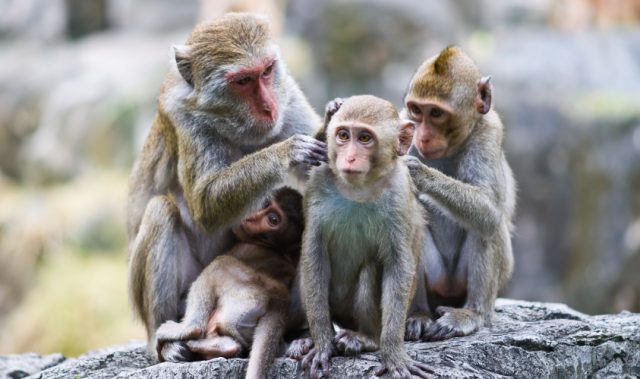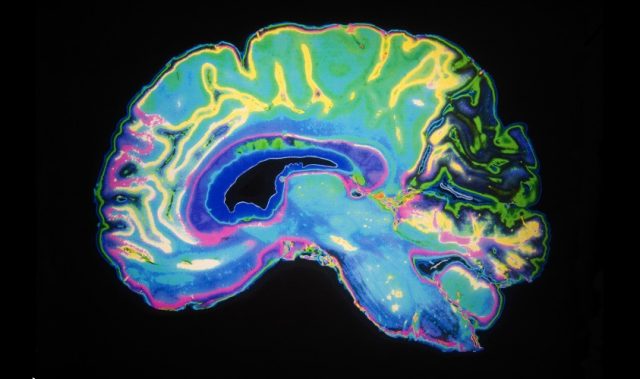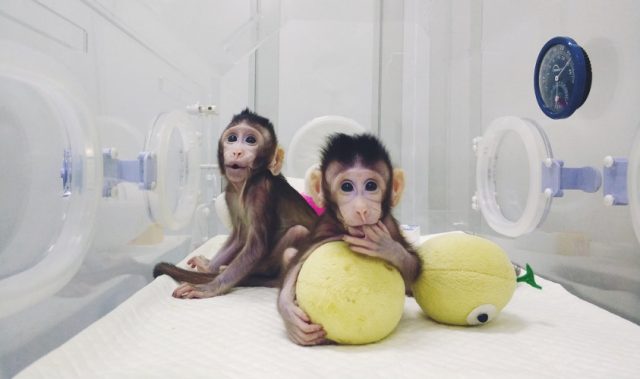
AsianScientist (Jan. 26, 2016) – For the first time, researchers have mimicked the symptoms of autism in non-human primates. Their results, published in Nature, could help scientists better understand the condition in humans.
Autism is a neurological disease characterized by repetitive behaviors and difficulties in social situations. It affects about 21.7 million people worldwide and was estimated to have cost the United States US$268 billion in 2015 alone.
Despite the heavy economic and social burden of autism, not much is known about the genetic causes and mechanism of the disease. In particular, the lack of a suitable animal model of the disease has hampered research efforts. Although animals such as mice have been used to study autism, their brain structures differ considerably from human brains and existing model animals have failed closely reproduce the symptoms of the disease seen in humans.
Non-human primates such as monkeys would make more suitable models of neurological conditions, however, they are not as easy to genetically modify as mice and would take much longer to study, taking between two to four years to reach sexual maturity for breeding.
In the present study, a team of researchers led by Professor Qiu Zilong at the Institute of Neuroscience, Chinese Academy of Sciences, has successfully developed genetically modified monkeys that exhibit a wide range of behaviors seen in human autism, including repetitive behaviors, elevated anxiety and defects in social interaction.
“We also found that the second generation of transgenic monkeys also appeared defects in social interaction, confirming the reliability and feasibility of using transgenic monkeys for studying human brain disorders,” Qiu told Asian Scientist Magazine.
Using a lentivirus system, Qiu and his team introduced the autism-related gene MeCP2 into monkey embryos. Duplications of the MeCP2 gene in humans is associated with autism-like symptoms, and 90 percent of patients Rett syndrome have been found to have mutations in the MeCP2 gene. Similarly, the resulting monkeys had multiple copies of MeCP2 and showed autism-like behavior such as repeatedly circling their enclosures.
Working with Professor Sun Qiang from the Shanghai Institutes of Biological Sciences, the team then went on to show that the behavior could be passed on to the next generation of monkeys. Using a technique pioneered by Sun, they harvested testes tissue from immature transgenic monkeys and transplanted it onto the backs of nude mice. This procedure yielded viable sperm which were then intracytoplasmically injected into eggs from monkeys not carrying the mutation.
“Our work suggests that expression of autism-related genes in the brain will lead to autism-like behaviors in non-human primates. This allows us to study autism-related changes in the brains more similar to human brains and provide unique insights to the neural mechanisms for autism,” Qiu said.
“This monkey model would also provide an unique model system to develop potential therapeutic interventions for autism.”
Qiu said that future research plans include brain imaging studies to identify the neural networks involved and CRISPR/Cas9 gene editing to specifically delete MeCP2 from the brains of transgenic monkeys.
“By performing these experiments, we will explore whether we will be able to intervene the genetic causes for autism and provide potential therapeutic resolutions for genetic disorders,” he concluded.
The article can be found at: Liu et al. (2015) Autism-Like Behaviours and Germline Transmission in Transgenic Monkeys Overexpressing MeCP2.
———
Copyright: Asian Scientist Magazine; Photo: Nie Yan-Hong.
Disclaimer: This article does not necessarily reflect the views of AsianScientist or its staff.












